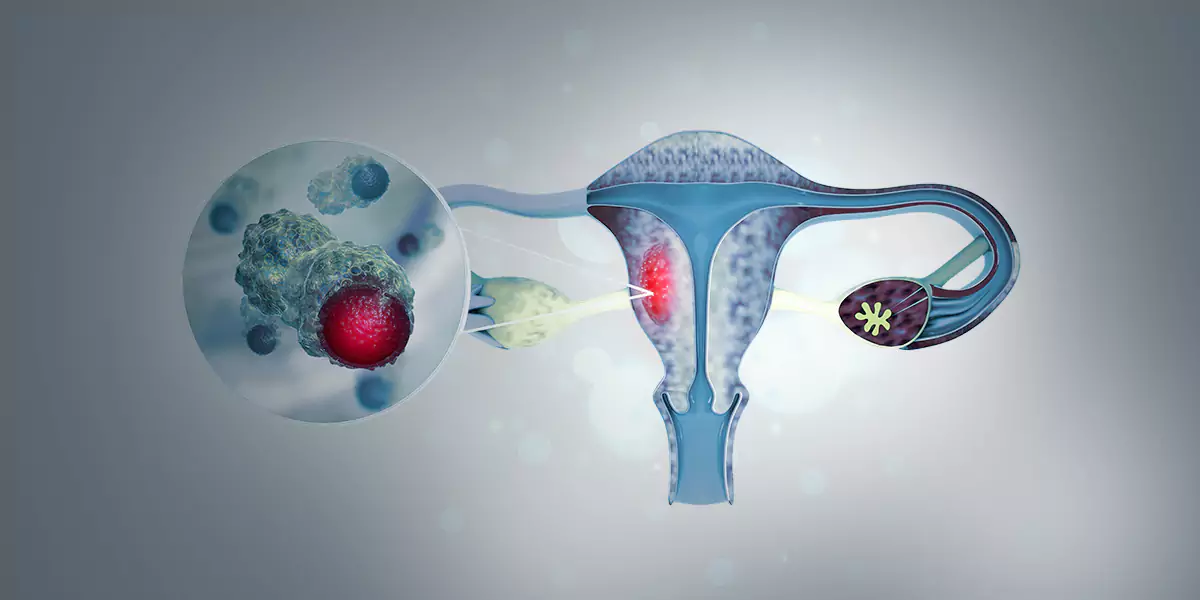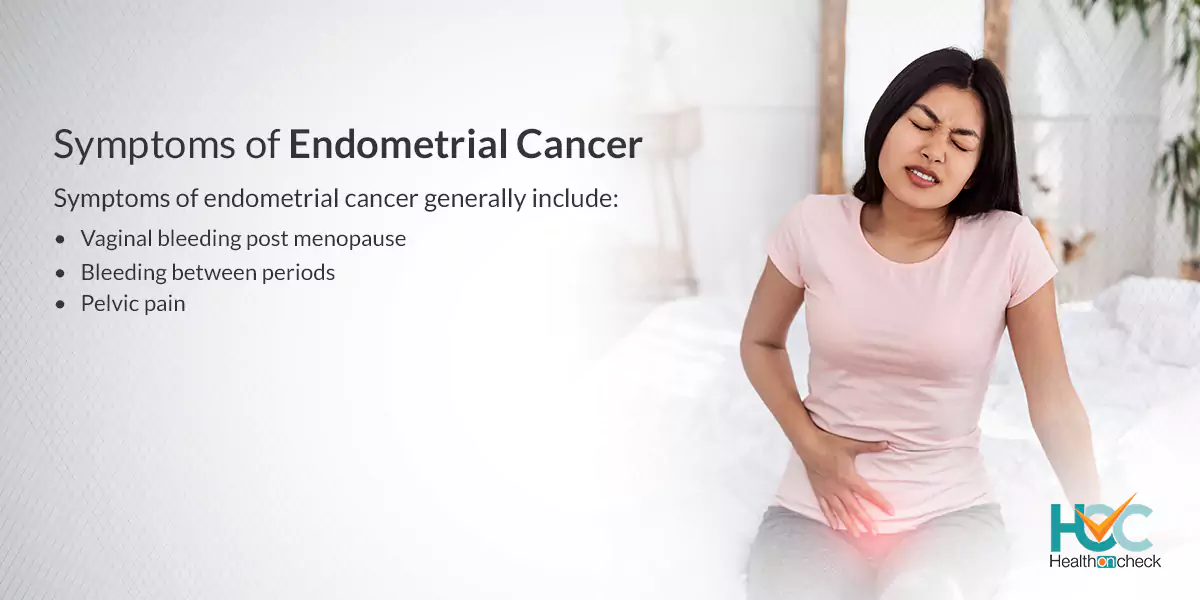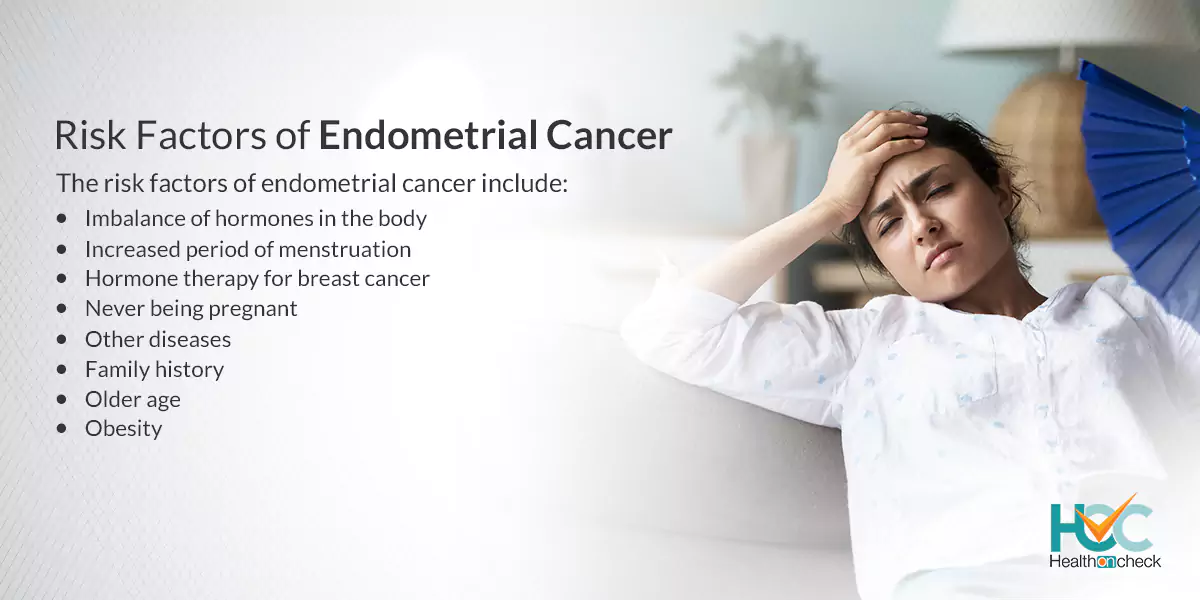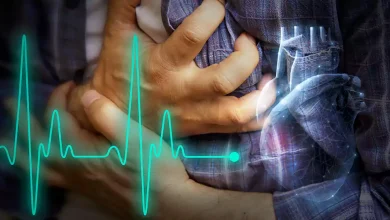What is Endometrial Cancer?

Endometrial cancer is a type of cancer that starts with the growth of cells in the uterus. The uterus is the hollow, pear-shaped pelvic organ in women where fetal development takes place. Endometrial cancer starts in the layer of cells forming the lining of the uterus, known as the endometrium. Endometrial cancer is the most common form of uterine cancer. Another form of uterine cancer that can develop in the uterus, is uterine sarcoma, but it’s very rare as compared to endometrial cancer. Endometrial cancer is usually detected at an early stage because of the symptoms that start to occur at the beginning of the cancer only. Irregular vaginal bleeding is generally the first symptom of it. If endometrial cancer is diagnosed early, surgically removing the uterus usually cures it.
What are the Types of Endometrial Cancer?
The types of endometrial cancer include:
– Endometrioid adenocarcinoma
It is the most common form of endometrial cancer. It develops in the glands of the endometrium and its severity differs.
– Uterine papillary serous carcinoma
It is an aggressive yet rare type of endometrial cancer. It develops in the lining of the uterus and tends to return, even if diagnosed early.
– Uterine clear cell carcinoma
It’s even more rare and accounts for less than 5 percent of cases of endometrial cancer.
– Uterine carcinosarcoma
It is another rare but usually more aggressive type of endometrial cancer which accounts for less than 5 percent of endometrial cancer cases.
What are the Symptoms of Endometrial Cancer?
Symptoms of endometrial cancer generally include:
– Vaginal bleeding post menopause.
– Bleeding between periods.
– Pelvic pain.
What are the Causes of Endometrial Cancer?
The exact cause of endometrial cancer isn’t clear but it’s known that something happens to cells in the lining of the uterus that mutates them into cancer cells.
Endometrial cancer starts to develop when cells in the lining of the uterus, known as the endometrium, mutate in their DNA. A cell’s DNA holds the commands that instruct the cell what function to do. Because of the mutation, the cells are instructed to multiply rapidly and also continue living when healthy cells die as part of their natural life cycle. It results in a lot of extra cells. The cells might create a mass known as a tumour. The cells then start invading and destroying healthy body tissue which eventually results in cancer. In some period, the cells might break away and start spreading to other places of the body.
What are the Risk Factors of Endometrial Cancer?
The risk factors of endometrial cancer include:
– Imbalance of hormones in the body
Oestrogen and progesterone are two main hormones and any imbalance of these hormones can lead to changes in the endometrium.
If a disease or condition leads to a change in the amount of oestrogen, but the level of progesterone remains the same, then it can increase the risk of endometrial cancer. Taking hormone therapy medicine containing oestrogen but not progestin after menopause also increases the risk of endometrial cancer.
– Other diseases
Other diseases such as an ovarian tumour, lynch syndrome, diabetes, or irregular ovulation patterns, which may occur in polycystic ovary syndrome can increase the risk of you developing endometrial cancer.
– Increased period of menstruation
Starting menstruating before age 13 or having late menopause increases the risk of endometrial cancer.
– Never being pregnant
If you’ve never been pregnant, then your risk of endometrial cancer increases as compared to someone who at least has one pregnancy.
– Older age
With growing age, the risk of endometrial cancer increases. Endometrial cancer mostly occurs after menopause.
– Obesity
Obesity also increases the risk of endometrial cancer.
– Hormone therapy for breast cancer
If you had taken hormone therapy medicine tamoxifen to treat breast cancer then your risk of developing endometrial cancer increases.
– Family history
If you have a family history of endometrial cancer, then your risk of developing it also increases.
What are the Complications of Endometrial Cancer?
Death is the most serious complication of endometrial cancer. However, if endometrial cancer is detected at an early stage, the prognosis is generally quite good.
Other complications of endometrial cancer include:
– Anaemia.
– The cancer spreads to other parts of your body.
– The body is not responding well to treatment.
How Endometrial Cancer is Diagnosed?
Procedures and tests to diagnose endometrial cancer include:
– Examining the pelvis
It involves checking the reproductive organs and it’s generally carried out during a regular checkup, but it may be required if you have symptoms of endometrial cancer.
During the exam, your doctor will inspect the outer genitals very carefully by inserting two fingers of one hand into the vagina while the other hand presses the abdomen and feel the uterus and ovaries. A device known as a speculum is inserted into the vagina that opens the vaginal canal which helps your doctor to detect signs of cancer or other problems.
– Imaging tests
Imaging tests produce pictures of the inside of the body and provide information on the location and size of your cancer. Transvaginal ultrasound is an imaging test used to diagnose this type of cancer where in the vagina a wandlike device called a transducer is inserted. It uses sound waves to make a video image of the uterus. The doctors can detect the thickness and texture of the endometrium by looking at the image. Another imaging test called ultrasound can help to find out for signs of cancer and rule out other factors for your symptoms. Other imaging tests like MRI and CT scans might also be prescribed.
– Hysteroscopy
During a hysteroscopy, a thin, flexible, lighted tube with a lens will be inserted through the vagina and cervix into the uterus. This tube is known as a hysteroscope. A lens on the hysteroscope permits your doctor to check the inside of the uterus and the endometrium.
– Biopsy
In this procedure, a sample of tissue is removed from the lining of the uterus and sent to a lab for testing to examine if it is cancer.
If enough tissue can’t be obtained during a biopsy or if the results of the biopsy are unclear, you might need to go through a process called dilation and curettage, where tissue is scraped from the lining of the uterus and examined under a microscope to detect cancer cells.
If endometrial cancer is diagnosed, most likely you will be referred to a doctor who specializes in treating cancers involving the reproductive system, called a gynaecologic oncologist who will make the further treatment plan.
What are the Treatment Options Available for Endometrial Cancer?
Usually, surgery is the first treatment used where the cancer is removed and it might include removing the uterus, ovaries, and fallopian tubes. Other treatment options might include medications or radiation therapy to kill the cancer cells. The treatment plan is based on the stage, your general health, and your preferences.
– Surgery
Surgery is most often used to treat endometrial cancer to remove the uterus, called a hysterectomy. It also usually includes removing the fallopian tubes and ovaries, known as the salpingo-oophorectomy. If a hysterectomy is done then you can’t become pregnant in the future. Also, once your ovaries are removed, you will reach menopause if you haven’t already.
The areas around your uterus will also be inspected to check for signs that cancer has spread. Your surgeon might also remove lymph nodes for testing. It helps to find out the stage of your cancer.
– Radiation therapy
Powerful radiation beams from X-rays, protons, or other sources are used in radiation therapy to kill cancer cells. In some situations, radiation therapy might be given before surgery. Radiation therapy can shrink a tumour thus making it easier to remove.
You might be given only radiation therapy if you aren’t healthy enough to go through surgery.
– Chemotherapy
In chemotherapy, strong medicines are given to kill cancer cells. Some people receive one chemotherapy medicine while some get two or more medicines combined. Chemotherapy medicines are mostly given through a vein, but some are given in the form of pills. Sometimes chemotherapy is used after surgery to reduce the risk of recurrence of cancer. Chemotherapy is sometimes used before surgery to shrink the cancer.
Chemotherapy might be prescribed to treat advanced endometrial cancer that has spread to other parts of the body besides the uterus or for treating cancer if it comes back.
– Hormone therapy
In hormone therapy medicines are given to decrease the hormone levels in the body and as a repercussion, cancer cells that rely on hormones to aid them grow may die. Hormone therapy is used in the case of advanced endometrial cancer where the cancer is spread beyond the uterus.
– Targeted therapy
In targeted therapy medicines are given that attack certain chemicals in cancer cells. These medicines block the chemicals, causing the cancer cells to die. Targeted therapy is normally used together with chemotherapy to treat advanced endometrial cancer.
– Immunotherapy
Immunotherapy uses medicine to help the body’s immune system to kill cancer cells. The immune system fights against germs and other cells that shouldn’t exist in the body. Immunotherapy is used when the cancer is at an advanced stage and other treatment procedures are not working.
Living with Endometrial Cancer
Endometrial cancer is the most common cancer that affects a person’s reproductive system. Getting diagnosed with endometrial cancer can be stressful and overwhelming for you but it’s usually diagnosed early because symptoms such as vaginal bleeding between periods or after menopause start to appear soon. If your endometrial cancer is diagnosed before it spreads, then it can be cured by surgery. You can also discuss ways to lead a normal and healthy life after treating the cancer. You can also join support groups where you will meet patients going through treatment or patients who are cured of cancer and share your feelings with them. It will make you feel better and you will learn to cope with the mental stress that comes with this disease.
Whom to Consult?
If you notice any unusual bleeding or spotting then you should discuss it with your doctor about it. If you have a risk of inherited endometrial cancer, discuss with your provider about annual testing. In such a scenario, you might require a yearly endometrial biopsy, beginning at age 35. If you notice any symptoms of endometrial cancer, contact your doctor and get yourself diagnosed.






